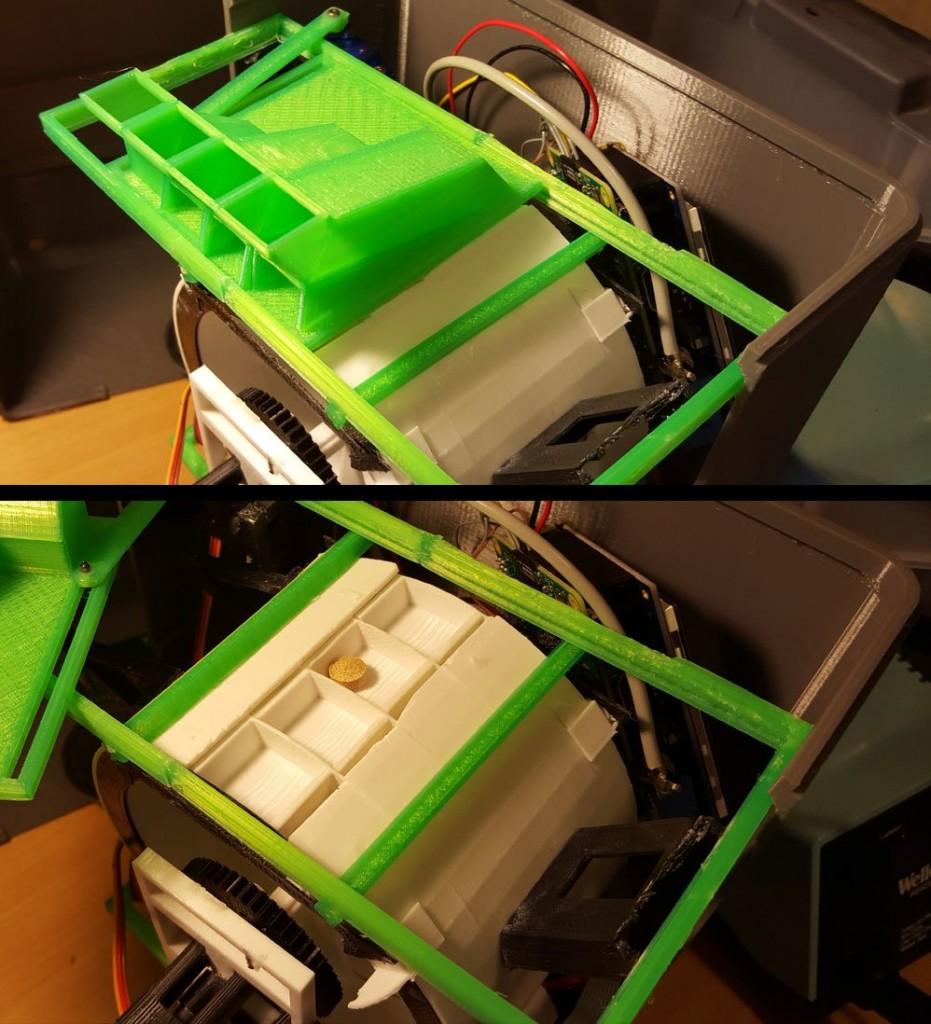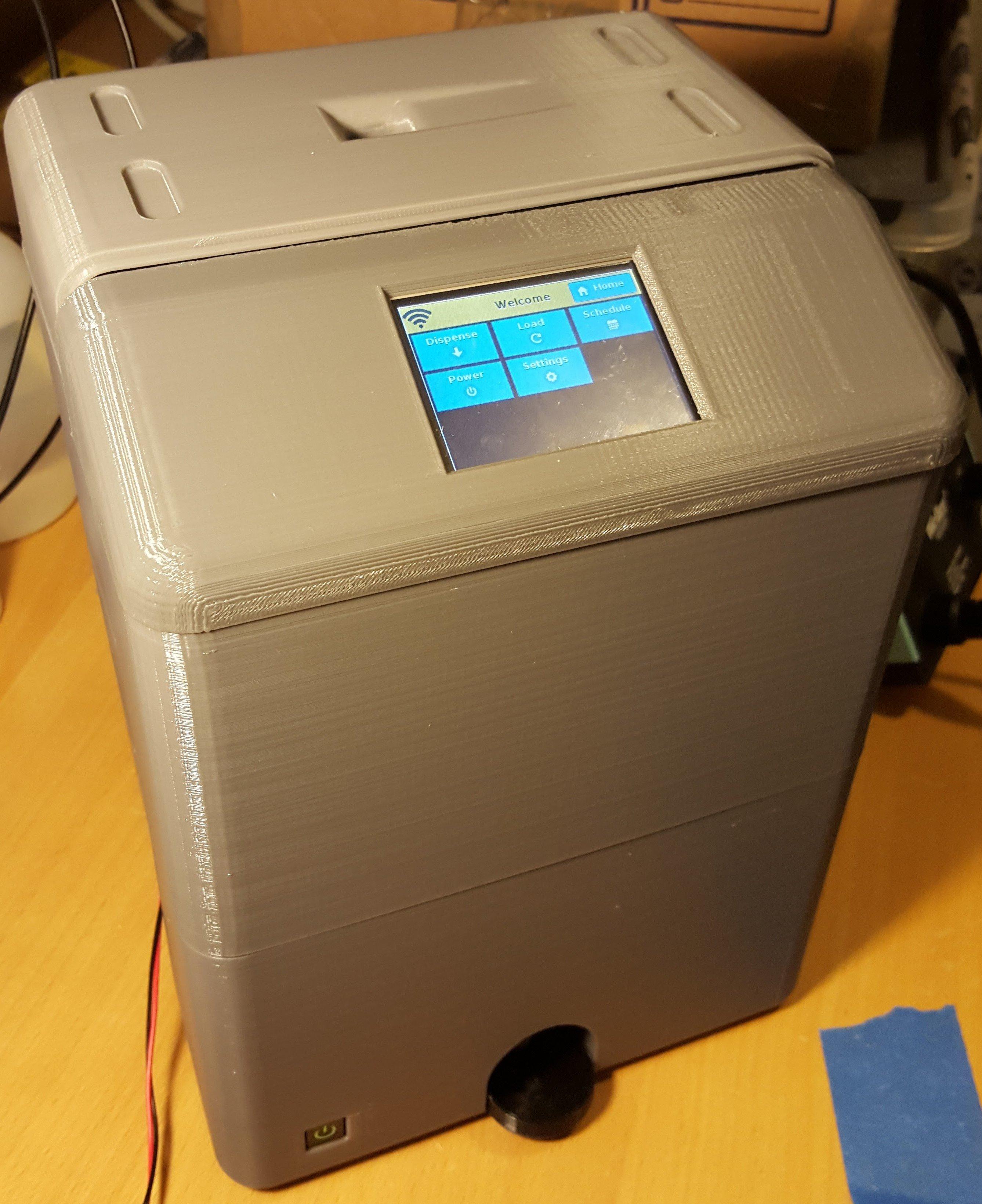Thanks to 3D printing some radical changes in contemporary health care are taking place. From enabling life-changing technologies like bioprinting to making day-to-day health maintenance easier than ever, 3D printing really is the tool of an ongoing revolution in medicine. A recent project posted on the maker site Hackaday is one of those efforts that combine 3D printing and state-of-the-art DIY electronics to make the lives of people who rely on multiple medications to remain alive and in good health easier.
Hackaday contributor “Joe,” who lives in Boston, Massachusetts but earned his PhD in Electrical Engineering from Oregon State University, has created a Raspberry Pi-powered, 3D printed device that he’s dubbed a “medication vending machine” that helps caregivers organize and monitor a person’s medications.
If you’ve ever cared for a person with a chronic illness, you know how overwhelming managing their medications at home can be. Those plastic pill organizers with the box for each day of the week are helpful only if the number of medications a person is required to take each day, sometimes multiple times per day, is fairly limited.
Joe’s Smart Desktop Medicine Organizer performs automatic pill organization. Each pill gets stored individually and can be accessed individually through an automated system.
Not only does the Smart Desktop Medicine Organizer device help caregivers and patients organize and dispense medications accurately and efficiently, it is WiFi- and cloud-connected so that, explains Joes, “the machine, its inventory, and its use statistics can be connected to a doctor or pharmacy so caregivers can monitor their patient’s use of medication.” The machine provides what its maker refers to as “Smart Medication Control.” Since it is  connected to the cloud it can confirm whether medications are safe to be used together and warn patients if that isn’t the case. It can also prevent patients from overdosing by limiting the frequency in which a given medication is dispenses.
connected to the cloud it can confirm whether medications are safe to be used together and warn patients if that isn’t the case. It can also prevent patients from overdosing by limiting the frequency in which a given medication is dispenses.
“This project,” said Joe, “is my solution to the problem of medication non-compliance.” He continued:
“Medication non-compliance basically refers to when a drug is not taken properly. This could be because some forgets to take an important medication, someone takes too much of a medication, or some takes two or more medications that should not be taken together.”
Evidently, medication non-compliance is a $300 billion problem in the US alone and responsible for 30% of all early deaths among the aging population. One of the major reasons why medication non-compliance happens is that people simply forget to take their medicine. The Smart Desktop Medicine Organizer not only reminds patients when to take a given dose of medicine, but it allows for a more sophisticated, dynamic process that enables caregivers and patients to manage more complex dosage situations as, for example, with pain medications that can be taken intermittently but never to excess.
The Raspberry Pi that controls the machine runs a web server that, according to Joe, “serves a web-page to kweb running in kiosk mode with a PiTFT resistive touch LCD interface.” That web interface, he continues,
That web interface, he continues,
“…Sends CGI commands that control servos within the machine and read an encoder. The Pi also has a wi-fi dongle that allows for a smartphone to connect to the internal web server and manage the machine remotely.”
As if this weren’t ingenious enough, Joe has designed the device so that all scheduling and inventory information is stored in a local SQLite database. Quite thorough like most any engineer, Joe has provided instructions for programming the Smart Desktop Medicine Organizer, including sharing links for the software libraries he used for the project.
Additionally, see his blog on Hackaday for a list of parts and supplies, project logs and instructions.
While Joe’s Smart Desktop Medicine Organizer seems complicated, its sophisticated design means that the more complex activities–making and then programming the device to dispense medications according to instructions–make the life of a patient infinitely less challenging and the likelihood of medication non-compliance far less of a concern.
Let us know if you think projects like this are useful for the population in the 3D Printed Medication Organizer forum thread over at 3DPB.com.
Subscribe to Our Email Newsletter
Stay up-to-date on all the latest news from the 3D printing industry and receive information and offers from third party vendors.
You May Also Like
Gorilla Sports GE’s First 3D Printed Titanium Cast
How do you help a gorilla with a broken arm? Sounds like the start of a bad joke a zookeeper might tell, but it’s an actual dilemma recently faced by...
Nylon 3D Printed Parts Made More Functional with Coatings & Colors
Parts 3D printed from polyamide (PA, Nylon) 12 using powder bed fusion (PBF) are a mainstay in the additive manufacturing (AM) industry. While post-finishing processes have improved the porosity of...
$25M to Back Sintavia’s Largest Expansion of Metal 3D Printing Capacity Since 2019
Sintavia, the digital manufacturing company specializing in mission-critical parts for strategic sectors, announced a $25 million investment to increase its production capacity, the largest expansion to its operations since 2019....
Velo3D Initiates Public Offering in a Bid to Strengthen Financial Foundations and Drive Future Growth
Velo3D (NYSE: VLD) has been among a number of publicly traded 3D printing firms that have attempted to weather the current macroeconomic climate. After posting a challenging financial report for 2023,...
































